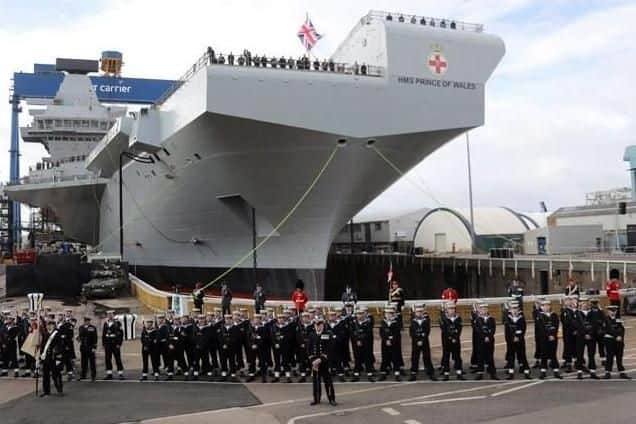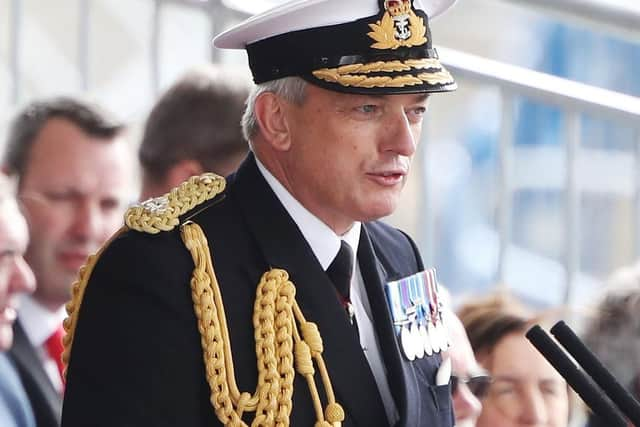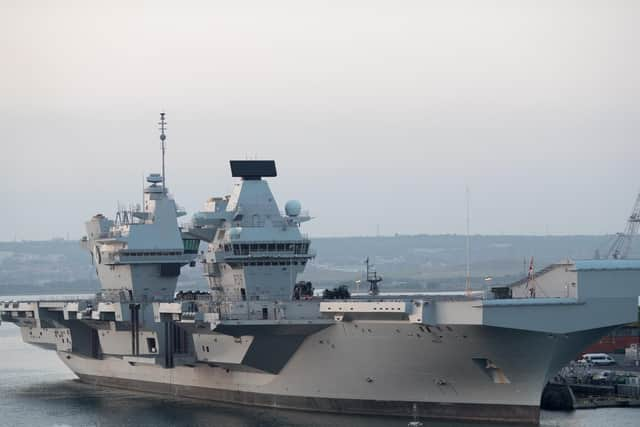Royal Navy’s top sailor vows Type 45 destroyers won’t be laid up to help staff HMS Queen Elizabeth and HMS Prince of Wales


Admiral Sir Philip Jones said the navy was ‘through’ relegating frigates and destroyers to ‘training’ vessels due to a shortage of sailors.
The First Sea Lord’s comments came as the Senior Service ramps ups its effort to bring both Queen Elizabeth-class supercarriers into operation.
Advertisement
Hide AdAdvertisement
Hide AdIn the past, the navy had left vessels – like the £1bn destroyer HMS Dauntless – alongside as it battled with a recruitment crisis.


But now Adm Jones said the navy was getting to grips with its manpower ‘deficiencies’, with recent figures showing a promising increase in the number of people joining the service.
Speaking to The News, the senior sailor said: ‘Despite having to endure some deficiencies in our manning over the last couple of years – which caused us to designate a couple of our frigates and destroyers as harbour training ships and adaptive force ships, running with a smaller ship’s companies – we’re now through that.
‘I’m pleased to say we have two crews for the two carriers [and] it’s not at the expense of manning elsewhere in the fleet.
Advertisement
Hide AdAdvertisement
Hide Ad‘But we’re not taking any of that for granted. We’re staying very focused on that challenge. We’re not resting on our laurels.’


The revelation comes exactly two years to the day that The News revealed how it was costing the navy £5.3m a year to keep vessels alongside as harbour training ships.
The latest development has been welcomed by a former naval head, Admiral Lord Alan West who said: ‘I’m absolutely delighted by the news. We have had ships laid up for far too long because we haven’t had the manpower. So I’m glad this could be at an end.’
HMS Prince of Wales, the newest of the two new carriers, is currently being built in Rosyth, Scotland, and expected to go to sea in the autumn. While HMS Queen Elizabeth, the navy’s future flagship, is gearing up for her first operational deployment in 2021.
Advertisement
Hide AdAdvertisement
Hide AdBoth ships had originally been earmarked with a crew of some 670. However, Queen Elizabeth’s former captain, Rear Admiral Jerry Kyd said this was some 70 short of operational requirements.


Last month reports came to light that top brass within the navy were worried the service would not have enough sailors to man the vessels, without pilling on extra strain across the fleet.
However, Adm Jones said the seafaring fighting force was having some ‘conspicuous success’ in hiring more people.
But he added: ‘It’s a constant challenge to get the right number of joiners through training at the right tempo and available for service in the fleet as quickly as we can.’.
Advertisement
Hide AdAdvertisement
Hide AdThe Royal Navy has been the only wing of Britain’s armed forces to have grown in the last three years, increasing by 410 personnel, according to the latest Ministry of Defence figures.
The total combined strength of the navy and Royal Marines currently stands at 38,550 compared to 38,140 in 2016.
Meanwhile, over the same period the British Army has lost 5,660 soldiers, shrinking from 120,930 in 2016 to 115,270 at the start of this year.
The RAF has also shrunk, although only fractionally, standing at an overall force of 36,940 now compared to 36,970 three years ago.
HMS Prince of Wales is expected to arrive in Portsmouth towards the end of this year.